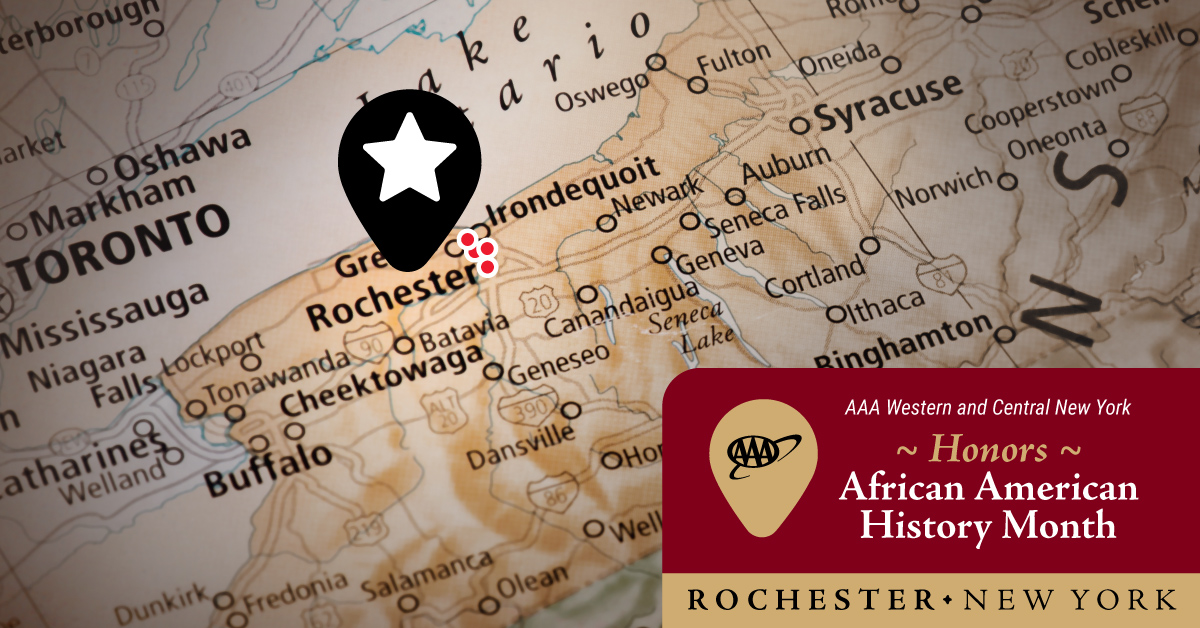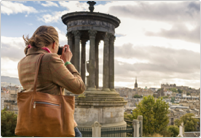AAA Honors African American History in Rochester Area
AAA Honors African American History in Rochester Area

Rochester has a rich African American history. A stop on the Underground Railroad, Rochester was home to freedom seekers, abolitionists, politicians, community leaders and others who contributed to the flight to freedom.
Important figures like Frederick Douglass, Rev. Thomas James, Myron Holley, Harriet Tubman, and Harriet Jacobs all have ties to helping slaves escape to freedom and spreading the abolitionist message from Rochester.
Though many of the original buildings and structures may no longer stand, markers point to the significance of the many culturally significant sites in the city of Rochester and surrounding areas.
Here are a few locations you can still see in person:
- Mount Hope Cemetery - 791 Mt Hope Ave., Rochester, NY 14620
The sprawling 196-acre Mount Hope Cemetery was established in 1838 and added to the National Register of Historic Places in 2018.
Many important figures of the abolitionist movement are interred at Mt. Hope. To name a few: Rev. Thomas James (former slave, James became the reverend of the African Methodist Episcopal Zion Church, a stop on the Underground Railroad), Frederick Douglass (one of the leading voices on the abolition of slavery, Douglass has several sites that Rochester tourists can visit), Myron Holley (known as one of the influential politicians who funded the Erie Canal, Myron was a vocal abolitionist who published his newspaper Rochester Freeman in 1839) and his daughter Susan “Sallie” Holley (who dedicated her life to educating African Americans). - African Methodist Episcopal Zion Church – 42 Favor Street, Rochester, NY 14608
Rebuilt over the years, the church still stands. Douglass printed his newspaper, The North Star (1847-1859), in the basement. Also, the church was a stop on the Underground Railroad; the pulpit included a trap door that led to the Genesee River. - Central Church - 50 N Plymouth Ave, Rochester, NY 14614
Frederick Douglass passed on February 10, 1895, in Washington, D.C. (where he lived the last years of his life). Douglass' Rochester memorial service was held at Central Church on February 26, 1895. From Central Church, his coffin, and mourners, were escorted to Mount Hope Cemetery. The building was expanded and is now The Hochstein School. - The Talman Building - 25 East Main Street, Rochester, NY 14614
This location, where Douglass moved his printing of The North Star, still stands. The important building also served as the Anti-Slavery Office and Reading Room. Many notable people graced the halls of The Talman including Harriet Jacobs (who went on to write Incidents in the Life of a Slave Girl) and her brother John S. Jacobs. - Kelsey's Landing Maplewood Park - 89 Maplewood Dr, Rochester, NY 14615
After runaway slaves made their way from point-to-point, house-to-house on their road to freedom, they embarked on a ship to Canada from Kelsey’s Landing. On the Genesee River, the northbound waterway can be visited today in Maplewood Park. Kelsey’s Landing was the last stop of the Underground Railroad in Rochester.
Would you like to tour these locations related to African American history? Use a AAA TripTik! Download the PDF version, or use the online TripTik below to help you navigate your journey!












